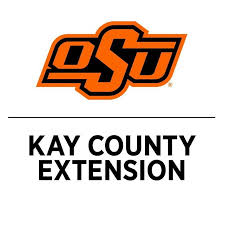Gardening Tips For August
Ponca City Now-OSU Extension - August 15, 2023 6:29 am

David Hillock, Senior Extension Specialist
Vegetables
• August is a good month to start your fall vegetable garden. Bush beans, cucumbers, and summer squash can be replanted for another crop. Beets, broccoli, carrots, potatoes, lettuce, and other cool-season crops can also be planted at this time. (HLA-6009).
• Soak vegetable seed overnight prior to planting. Once planted, cover them with compost to avoid soil crusting. Mulch to keep planting bed moist and provide shade during initial establishment. Monitor and control insect pests that prevent a good start of plants in your fall garden.
Fruit and Nut
• Continue protective insect applications on the fruit orchard. A good spray schedule is often abandoned too early. Follow directions on last application prior to harvest. (EPP-7319)
Flowers
• Towards the end of the month, divide and replant spring-blooming perennials like iris, peonies, and daylilies if needed.
Trees and Shrubs
• Discontinue deadheading roses by mid-August to help initiate winter hardiness.
• Watch for second generation of fall webworm in late August/early September. Remove webs that enclose branches and destroy or spray with good penetration with an appropriate insecticide.
Lawn and Turf
• Winter annual weeds like Poa annua, better known as annual bluegrass, chickweed and henbit can be prevented with a preemergence herbicide application in late August. Water in the product after application. (HLA-6420)
• Areas of turf with large brown spots should be checked for high numbers of grubs. Mid-to-late August is the best time to control heavy white grub infestations in the lawn. Apply appropriate insecticide if white grubs are a problem. Water product into soil. (EPP-7306)
• Tall fescue should be mowed at 3 inches during the hot summer and up to 3½ inches if it grows under heavier shade. (HLA-6420)
• For areas being converted to tall fescue this fall, begin spraying out bermudagrass with a product containing glyphosate in early August. (HLA-6419 & HLA-6421)
• Irrigated warm-season lawns can be fertilized once again; apply 0.5 lb N/1,000 sq ft in early to mid-August.
• Brown patch of cool-season grasses can be a problem. (HLA-6420)
General
• Water compost during extremely dry periods so that it remains active. Turn the pile to generate heat throughout for proper sterilization.
• Always follow directions on both synthetic and natural pesticide products.
• Watch for high populations of caterpillars, aphids, spider mites, thrips, scales, and other insects on plant material in the garden and landscape and treat as needed. (EPP-7306)
• Water all plants thoroughly unless rainfall has been adequate. It is better to water more in depth, less often and early in the morning.

Kay County OSU Extension
Government organization



